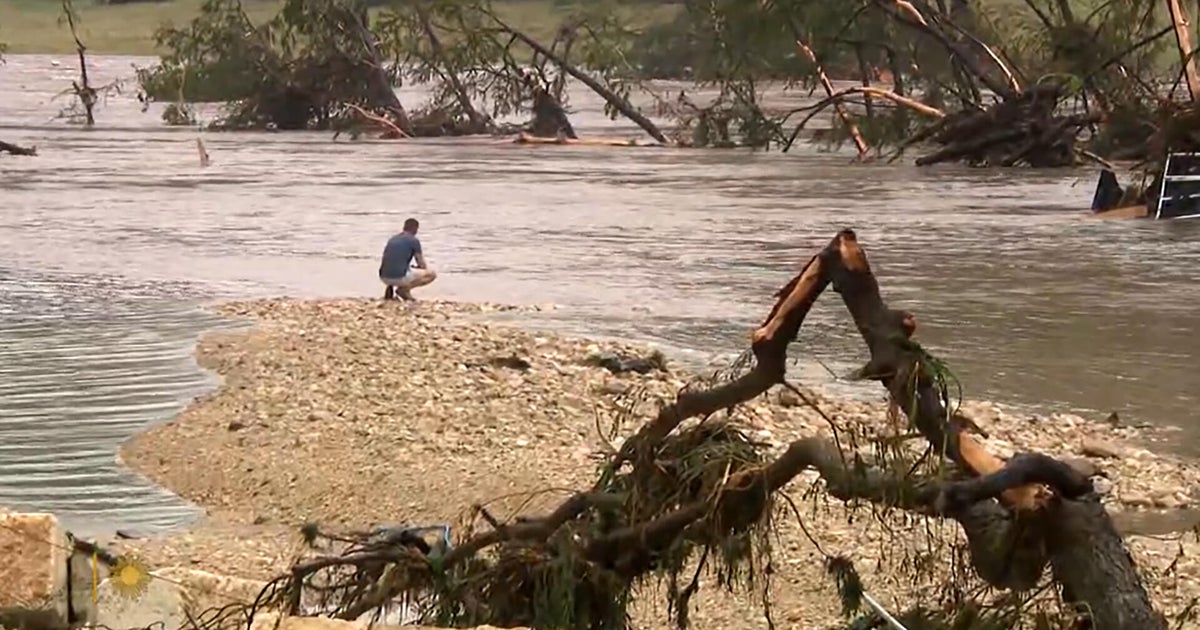
As Texas reels from the catastrophic floods that claimed at least 90 lives across the central part of the state during the Independence Day weekend, a storm of finger-pointing has engulfed local, state, and federal officials.
While the waters have receded, they leave behind more than just a trail of destruction—they reveal a deep failure in how life-threatening weather warnings are communicated, received, and acted upon.
This disaster has now become a case study in what happens when systems meant to protect lives break down, and the fallout is prompting renewed calls for technological upgrades, political accountability, and a cultural shift in how Texans perceive flash floods.
The chaos began in the early hours of Friday, when relentless rain, remnants of Tropical Storm Barry, turned Texas Hill Country into a nightmare. Raging rivers overflowed their banks, creeks became torrents, and campsites filled with families became death traps.
Despite a steady stream of meteorological alerts from the National Weather Service (NWS) beginning as early as Wednesday, many of those living in or visiting central Texas said they received no adequate warnings—or at least none they took seriously. The core of the problem, experts now agree, lies not in the forecast, but in the system that translates those forecasts into timely, believable action.
This “last mile” failure, as emergency planners call it, was especially deadly in central Texas. The region is notorious for its limestone canyons, fast-rising rivers, and a population often unfamiliar with the power of flash floods.
Areas like Kerrville, where many of the deaths occurred, are dotted with vacation homes and riverside campsites that sit directly in flood-prone zones. Meteorologists say the topography and built environment amplify the danger, with creeks that swell dramatically in minutes and camping grounds that offer little elevation for escape.
Yet warnings had been issued. On Wednesday, CBS Austin meteorologist Avery Tomasco had sounded the alarm, citing the presence of “all this tropical fuel” over central Texas.
He hesitated, even doubted his own prediction, as he mentioned rainfall totals between 5 and 15 inches—numbers that, in hindsight, proved to be devastatingly accurate.
By Thursday evening, NWS officials warned that dry, compacted soil would be quickly overwhelmed, and by 1:14 a.m. Friday morning, a flash flood warning was in effect for Kerr County.
It should have triggered automatic mobile alerts and mobilized local emergency responders. Instead, chaos ensued, and local leaders claimed they had no idea it was coming.
Kerr County Judge Rob Kelly insisted that officials “had no reason to believe this was going to be anything like what has happened here.” Texas’s top emergency management chief, Nim Kidd, echoed this, arguing that the forecasts “did not predict the amount of rain that we saw.”
Their statements left meteorologists stunned. Ryan Maue, a former federal meteorologist, took to social media to express disbelief, saying Kidd’s statement “baffled” him.
“It set off a furious news cycle in which the National Weather Service was blamed for the tragic events because a forecast two days prior wasn’t as extreme,” Maue wrote.
The federal government, especially the Department of Homeland Security, defended the timeline of warnings, noting that alerts had increased in urgency throughout the week.
John Sokich, former legislative director of the NWS staffers’ union, emphasized that this is how the system is designed to work. “It starts wide, gets narrower, then turns into a specific call for action,” he said. The problem, he noted, is whether people receive and believe the information.
That breakdown in communication can be attributed in part to overexposure. In places like central Texas, phones buzz with weather alerts constantly—so much so that residents begin to ignore them.
This phenomenon of “alert fatigue” is one of the leading reasons flash flood warnings fail to trigger meaningful responses. Additionally, text-based alerts often lack clarity or urgency.
For many, the term “flash flood” doesn’t evoke the imminent danger of a sudden, deadly wall of water. University of Texas communications professor Keri Stephens has studied disaster messaging in Texas and found that the phrase “Turn around, don’t drown” doesn’t resonate with young adults.
“They don’t think it’ll happen to them,” she said. Her research showed that an alternative phrase, “Stay High and Dry,” was more effective at conveying the personal risk of driving through water.
Technology also failed in some areas. Although Kerr County joined FEMA’s Integrated Public Alert & Warning System (IPAWS) in 2020, many residents reported receiving vague or delayed notifications.
Amanda Sue Jones, a camper near the Guadalupe River, told CNN that she had seen NWS alerts during the night but didn’t receive any direct warning from the campground until the water had already begun to rise.

By the time the message arrived, many families were already trapped. Jones described a harrowing scene of rushing water sweeping away a nearby camper in a matter of seconds. “It was just so fast. It was unreal,” she said.
Others questioned why no sirens had sounded. In flood-prone areas like parts of Oklahoma and Louisiana, river gauges are connected to audible alarms that automatically alert nearby populations.
Kerrville officials have long wanted such a system but lacked funding. In 2018, during the Trump administration, the Upper Guadalupe River Authority and Kerr County applied for $1 million in FEMA funds to build a warning system and were denied.
Earlier this year, a bipartisan bill that would have allocated $500 million for a modern disaster alert system passed the Texas House but died in the Senate.
One of its opponents was Rep. Wes Virdell, a Republican freshman from Kerr County. In a remarkable reversal, Virdell now says he regrets that vote. “My vote would probably be different now,” he admitted.
Staffing may also have played a role. According to Sokich and others, years of budget cuts and staff reductions at NWS offices have left critical gaps in personnel.
These offices may still be capable of generating accurate forecasts, but they often lack the manpower for targeted outreach to local officials and vulnerable communities.
UCLA meteorologist Daniel Swain noted that such outreach is “one of the first things to go away when offices are critically understaffed.” The result is a communications system that relies on overburdened local officials and vague, text-based alerts to deliver urgent warnings—hardly sufficient in rural, spread-out communities with limited cell coverage.
Texas Governor Greg Abbott has vowed to act. During a press conference on Sunday, he promised to bring forward legislation to improve statewide warning systems during the upcoming special session in July. Whether that will be enough remains to be seen. For now, communities are left mourning the dead and demanding answers.
Some experts argue that a complete cultural shift is needed—one that treats flash floods with the same seriousness as hurricanes or wildfires. Chad Berginnis, head of the Association of State Floodplain Managers, said that in 30 years of disaster management, he has seen the same cycle of tragedy and forgetfulness repeat. “Flood amnesia sets in fast,” he warned. After a few years, he said, people move on and the lessons are forgotten.
That cycle can only be broken by embedding preparedness into the infrastructure and culture of at-risk communities. Low-tech solutions like weather radios should be standard in campgrounds.
Emergency response plans should be clear and practiced. Businesses operating near rivers should develop their own evacuation procedures, rather than relying entirely on government alerts. Above all, messaging must be tailored to cut through skepticism and complacency.
The deadly Independence Day flood in Texas has highlighted a profound systemic failure. It wasn’t a failure of science, but of communication, coordination, and political will.
The forecasts were accurate, the warnings were issued, but they did not translate into action. In the aftermath of one of the deadliest floods in state history, Texans are now left asking: how many lives could have been saved if someone—anyone—had listened, believed, and acted in time? And will those who survived still remember the next time the water rises?
The next legislative session will determine whether those in power truly learned from the catastrophe or whether Texas will remain vulnerable the next time nature strikes.

For now, as families bury their dead and communities begin the long road to recovery, the flood serves as a chilling reminder that when disaster strikes, every minute—and every message—matters.





